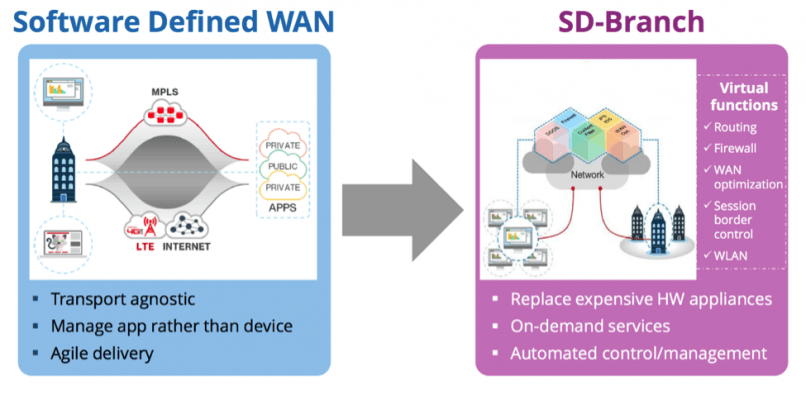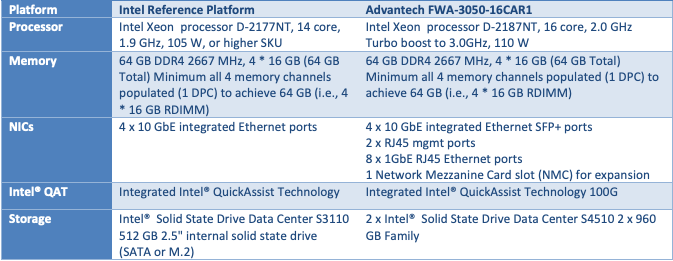New-Age Networks Need SD-WAN at the Edge

According to Cisco’s Visual Networking Index (VNI), global IP traffic will increase 26 percent year-over-year to a staggering 396 exabytes per month in 2022 (Figure 1). This growth is being driven by smartphones, IoT devices, and other platforms that traditionally haven’t been connected to the internet.
All of these require bandwidth and specialized network services. This is putting stress on existing edge network infrastructure and the enterprises that rely on it, especially as we move toward 5G.
For example, an enterprise or internet service provider may use deep packet inspection (DPI) to analyze public data traffic, either to detect viruses or streamline the flow of network traffic crossing their infrastructure. They may also use a virtual private network (VPN) to support real-time IoT traffic with different quality of service (QoS) and security requirements. Likely, they also leverage firewalls, session border controllers, and so on.

Traditionally, specialized hardware appliances were required to support each of these services. Not only is this costly to maintain and difficult to manage, it doesn’t scale with the growth in data traffic and types of applications and services that edge networks now have to support.
Rather than taking a hardware-centric approach to edge network service enablement, an alternative is to deliver these functions in software that runs on general-purpose hardware. This both minimizes the cost and complexity of managing function-specific appliances and also future-proofs network architectures against the demands of more and diverse traffic in the future.
Network equipment providers now champion this software-defined infrastructure through universal customer premises equipment (uCPE) for SD-WAN. Read “SD-WAN and uCPE: Introduction”.
Future-Proof Edge Networks
uCPE for SD-WAN is based on network functions virtualization (NFV) technology, which allows network services to be delivered as virtual network functions (VNFs) on multicore network processors.
As a result, a single uCPE networking platform can be deployed at the edge of a provider network or on-premises at an enterprise facility to deliver dynamic traffic orchestration and management, security, session control, and other services.
This enables use cases like the software-defined branch, where the number and performance of services at an installation are limited only by the availability of processor cores (Figure 2).

Because this infrastructure is completely software-defined, operators can provide these services as different remotely managed offerings for different enterprise clients, all on a monolithic hardware architecture.
Rather than hosting network functions and critical enterprise applications in a far-off data center, services can be deployed and hosted in uCPE platforms close to the data source. This helps reduce network transmission costs and improves determinism for real-time 5G applications.
Accelerating Platform Deployment for New Edge Networks
General-purpose networking hardware is nothing new, having been deployed in the data center for some time. But many network operators and service providers struggle with the challenge of testing these platforms to qualify their throughput and performance. This can be costly, time-consuming, and delay deployment of SD-WAN infrastructure.
To ensure performance and reduce testing associated with uCPE platforms, Intel® and partners like Advantech have collaborated on Intel® Select Solutions for uCPE (Intel® ISS for uCPE).
Available in Base or Plus configurations, the platforms provide between 4- and 16-core Intel® Xeon® processors, at least 16 GB of memory, at least 256 GB storage, and 4 x 10 GbE ports (Figure 3). Intel® Quick Assist Technology (Intel® QAT) is also supported in the Plus configuration to offload cryptographic procedures from the primary processor cores.

The scalable ISS for uCPE reference platforms provide a baseline set of technology tailored for SD-WAN deployments.
From there, companies like Advantech can offer additional performance in white box solutions such as the FWA-3050 family of networking appliances. But to be branded an ISS for uCPE platform, the systems must pass benchmark testing against minimum performance requirements (Figure 4). These include 100 percent line-rate packet processing performance and up to 100 Gbps encryption.

On the software side, all ISS for uCPE solutions leverage an open source-centric stack that consists of the Intel® Data Plane Development Kit (Intel® DPDK), Ubuntu Linux, and KVM/QEMU hypervisor.
Users can be confident that they won’t be locked into proprietary solutions, and can minimize the cost associated with retesting specialized software patches or additions to the stack. They can also rest assured that any ISS for uCPE offering delivers standard performance for services like firewalls, encryption, border control, and others.
Advantech, for example, differentiates its FWA-3050 ISS for uCPE networking appliances through BIOS optimizations that allow the software stack to run more efficiently on their hardware (Figure 5). The company also integrates an intelligent platform management interface (IPMI) controller to ease remote system management, maintenance, and upgrades.

In addition to those features, the company differentiates its FWA-3050 offerings through energy efficiency, additional I/O, and support for a broad ecosystem of software partners whose solutions are also tuned to Advantech hardware appliances.
Cost-Effective Scaling for 5G
As enterprises begin to capitalize on new services enabled by 5G networks, the edge infrastructure will require a refresh. These high-bandwidth, low-latency applications require more network intelligence at the edge, as well as a high degree of flexibility so that infrastructure can adapt to dynamic networking demands on the fly.
This is not possible using current network architectures. Managing and maintaining specialized hardware appliances is not only prohibitive in terms of cost, it also requires expert network engineers and IT personnel to respond in person if equipment fails.
On the other hand, a software-centric approach allows network operators and enterprise application providers to remotely diagnose and respond to faults and minimize downtime.
Because of the flexibility provided by general-purpose uCPE and SD-WANs, service providers can also adapt quickly to new and emerging trends in networking. With ISS for uCPE, they can deploy this infrastructure confidently, knowing their architecture will deliver the performance they expect.